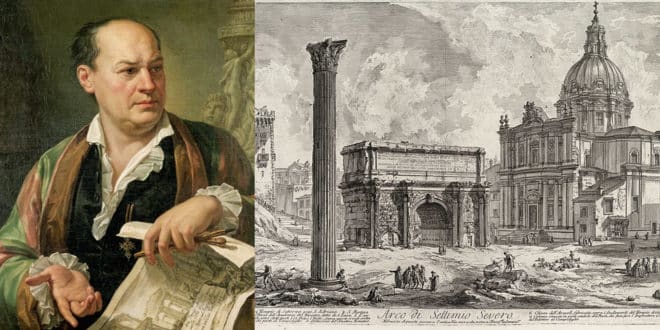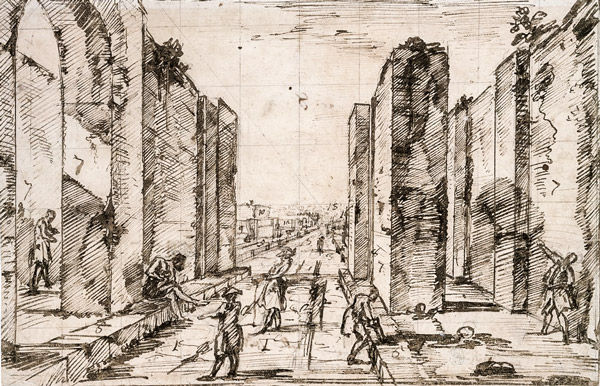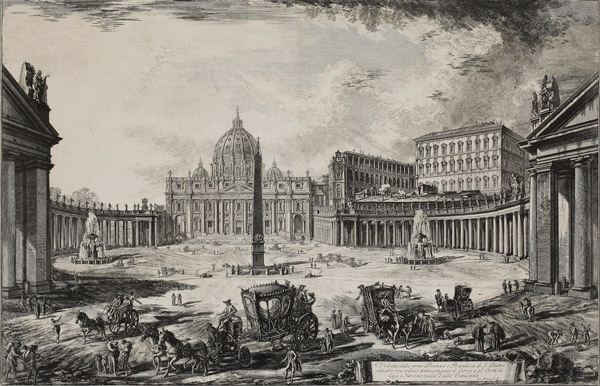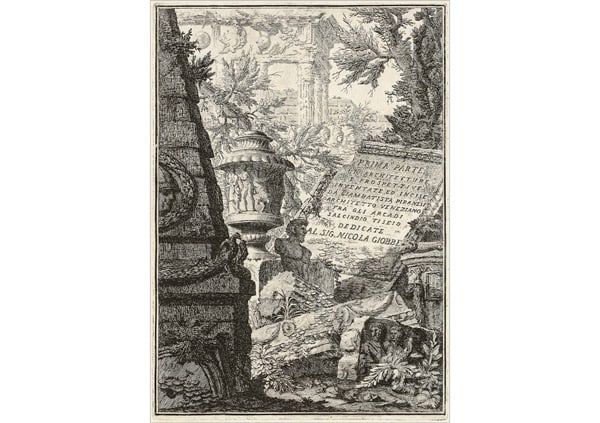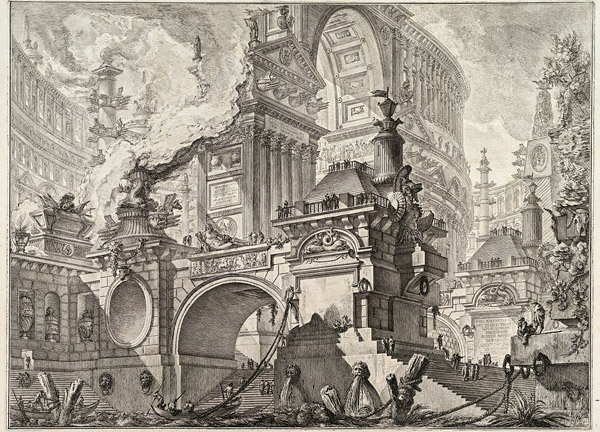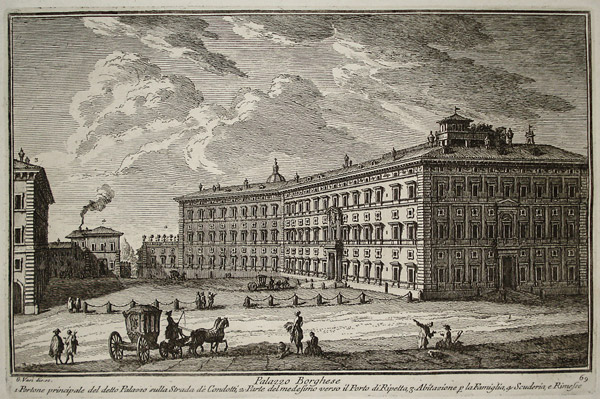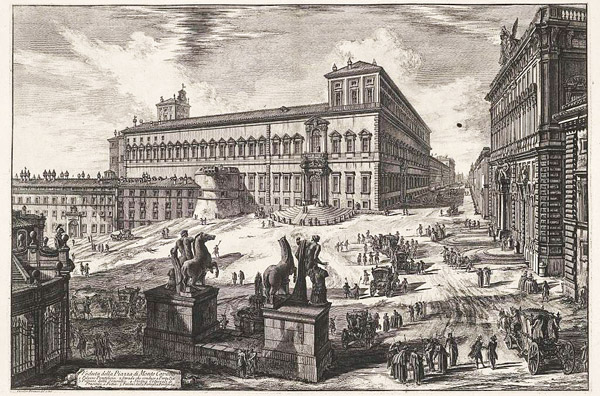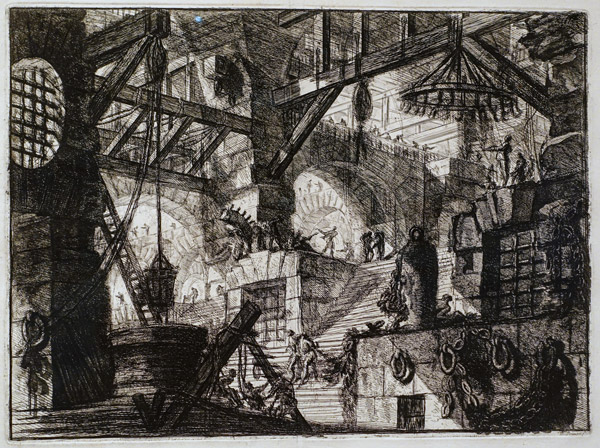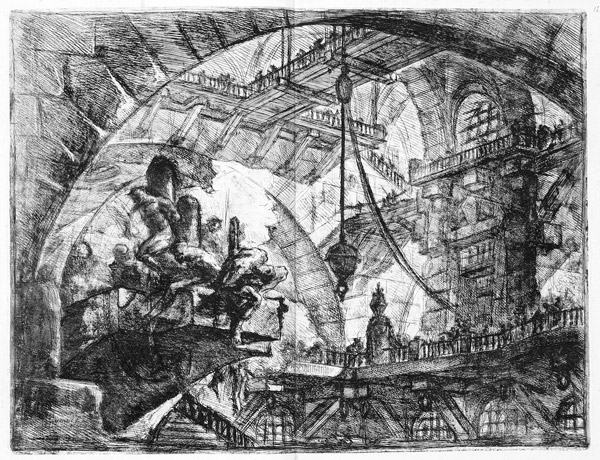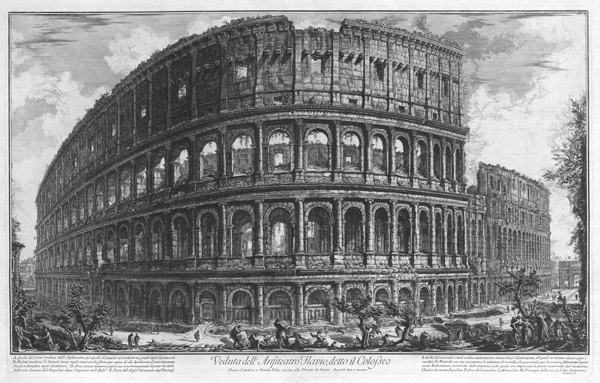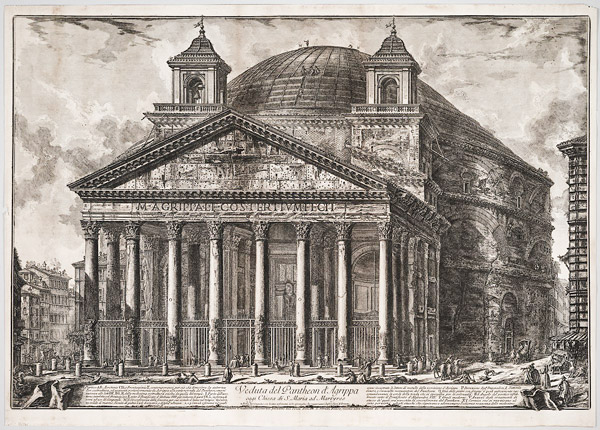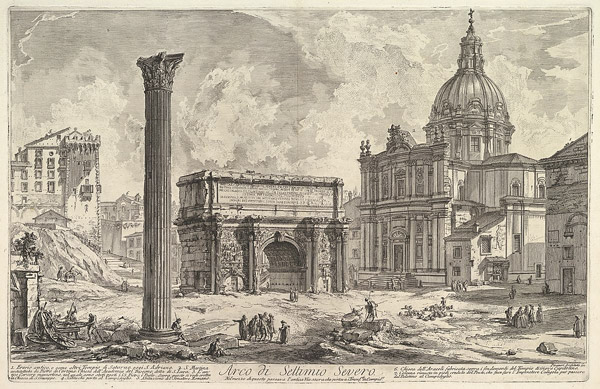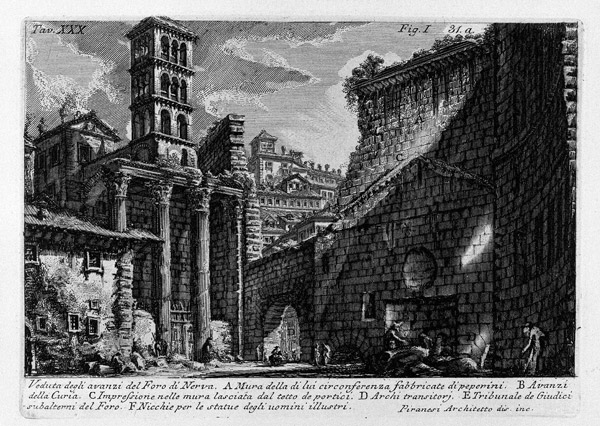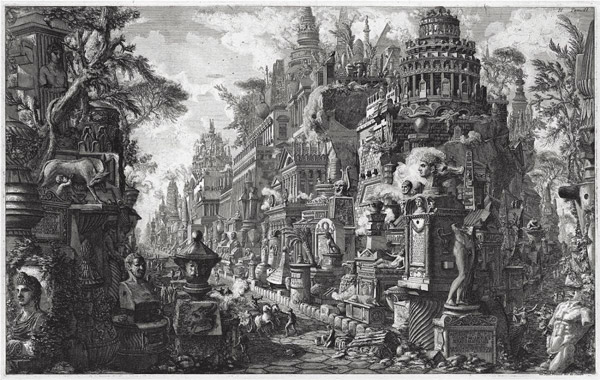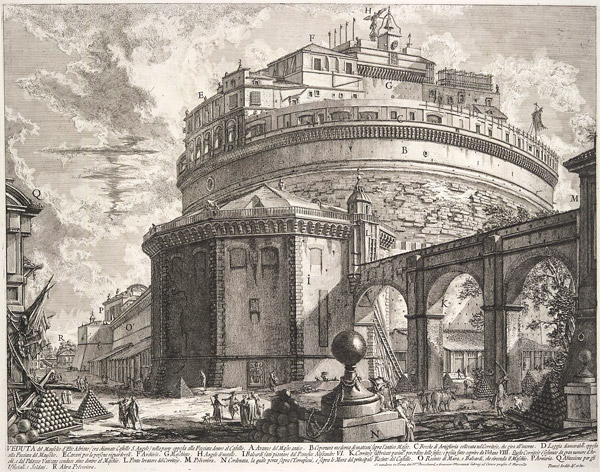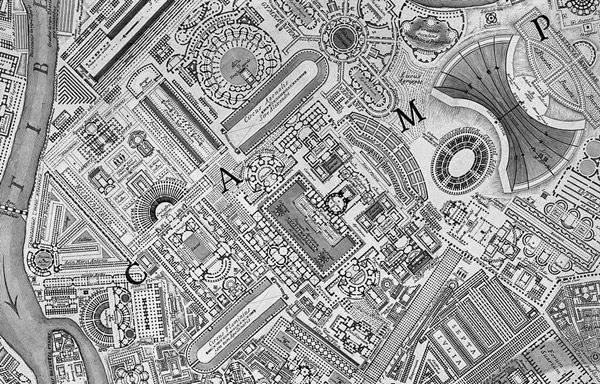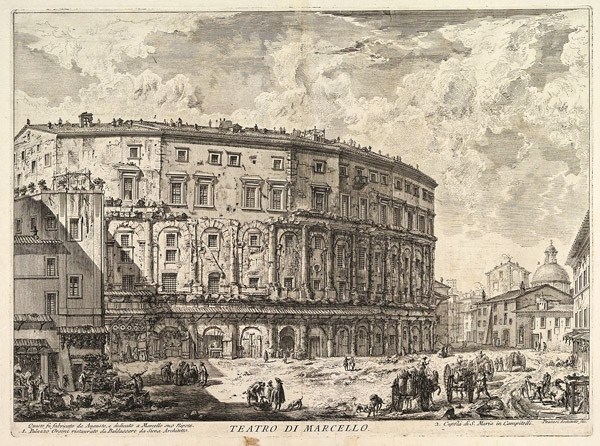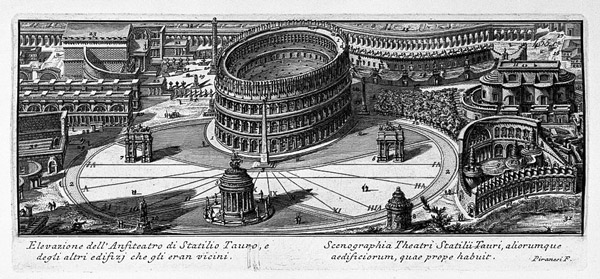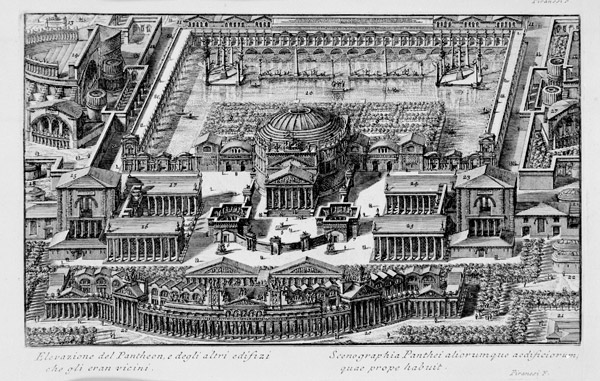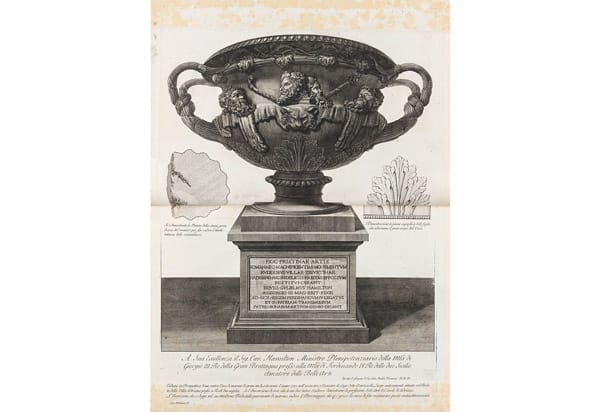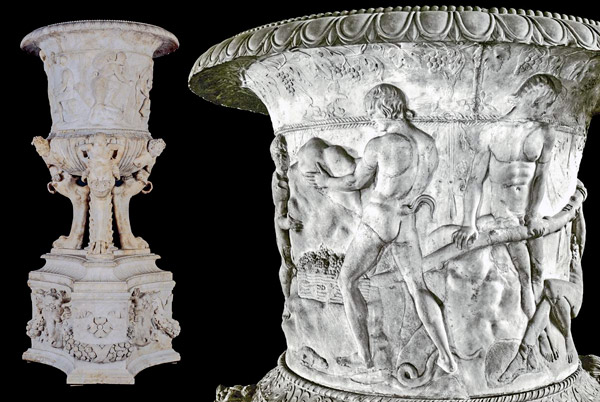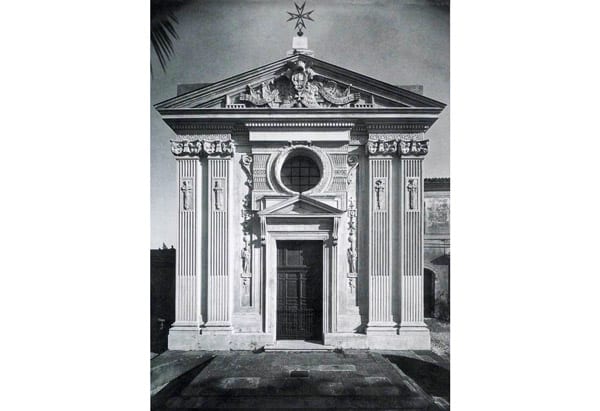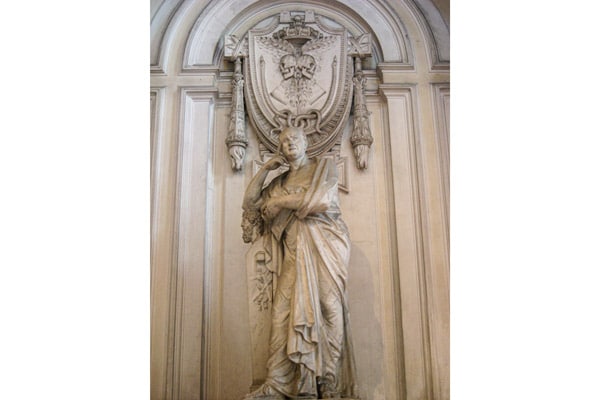Giovanni Battista Piranesi, an outstanding figure of the 18th century, was a talented artist-engraver and master of etching. He was also an architect, art historian, collector of antiquities, and archaeologist.
His multifaceted talent shone brightest in his marvelous graphic works dedicated to Rome, the city that fascinated the artist throughout his life. He not only described and captured in his drawings, engravings, and etchings the preserved and already vanished monuments of ancient Rome but also extolled their grandeur and unique beauty.
Page Contents
Family of Piranesi
The master of engraving, also known as Giambattista Piranesi, was born on October 4, 1720, in the small town of Mogliano Veneto in the province of Treviso, which belongs to the Veneto region. His parents were Angelo Piranesi, originally from the Slovenian town of Pirano, and Laura Lucchesi, a Venetian.
The family environment influenced Giambattista’s choice of profession and interests. His father, a stone carver and builder, gave him his first lessons in practical architecture. His maternal uncle, Matteo Lucchesi, a magistrate of the waterworks in Venice, became his mentor in the study of hydromechanics. His older brother, Angelo, a Dominican monk, instilled in Giovanni a love for the history of Ancient Rome, literature, and also taught him Latin.
Education and Career Choice
Young Piranesi thirsted for new knowledge, and he received it by continuing his education under the famous Venetian architect Giovanni Antonio Scalfarotto and the engraver Giuseppe Carlo Zucchi. His acquaintance with Tommaso Temanza, a Venetian engineer-builder, writer, and architectural historian, not only brought Giovanni experience as a designer but also developed into a lifelong friendship.
In 1740, Giovanni arrived in Rome as part of a diplomatic delegation and settled not just anywhere, but in Palazzo Venezia. He obtained his first job as a draftsman under Marco Foscarini, the Venetian ambassador in Rome.
For Piranesi, it was a period of new discoveries and finding his place in the multifaceted world. The young artist took drawing lessons from the renowned cartographer and engraver Giovanni Battista Nolli and scenography lessons from the artist brothers Giuseppe and Domenico Valeriani. The greatest influence on Giovanni Battista came from Giuseppe Vasi, with whom he worked for a while. This talented landscape artist and engraver imparted important knowledge and secrets of etching to his future competitor.
Over the course of three years, Giovanni Battista explored every corner of Rome where remnants of ancient structures were preserved. He participated in excavations and archaeological expeditions in Herculaneum and Pompeii, made sketches of architectural elements, and studied the history and art of Ancient Rome.
Eyewitnesses recounted that Giovanni would even spend the night among the ruins, engrossed in their study.
In 1743, Piranesi returned to Venice with the ambassador and worked there for the next four years. During this time, he reevaluated his abilities and made a definitive choice, settling on the profession of an engraver. This form of artistic expression allowed Piranesi to fulfill his ambitions as an artist, architect, and historian simultaneously.
Piranesi First Works
The culmination of Giovanni Battista Piranesi’s impressions of Rome resulted in his first series of engravings created between 1743 and 1745. These engravings were executed with astonishing photographic precision and in an unconventional style.
The technique that defined Piranesi’s work was a combination of etching and burin engraving, which allowed him to achieve expressiveness and soft contrasting in his paintings.
The first works immediately showcased the talent of their creator and brought him recognition and acclaim among the society of architects and artists in Rome.
The First Part of Architectural Sketches
Piranesi’s debut work was the scientific treatise “The First Part of Architectural Sketches and Perspectives, Invented and Engraved by Giovanni Battista Piranesi, Venetian Architect” (Prima parte di architetture, e prospettive inventate, ed incise da Giambatista Piranesi architetto Veneziano), published in 1743.
In this work, the author presented 12 engravings featuring imaginary views of ancient Rome, capturing the Capitoline Hill, the Roman Forum, pagan temples, imperial mausoleums, majestic bridges, and other grandiose structures.
Piranesi’s fantasies did not arise out of thin air. To create his etchings, he meticulously studied ancient engravings, descriptions of lost sculptures, and the works of historians in the library.
It must be acknowledged that these views were so impressive that travelers often found themselves disappointed when comparing Piranesi’s engravings of ancient monuments to reality. In the 18th century, much of Rome’s ancient structures were mere piles of stones, covered in dust and overgrown with vegetation. The Roman and Imperial Forums were grazing grounds, where pigs and buffaloes roamed.
Views of Rome
Just two years after the release of his first work, Piranesi began creating a series of engravings titled “Various Views of Ancient and Modern Rome” (Varie Vedute di Roma Antica e Moderna). The author was clearly influenced by Giuseppe Vasi’s work titled “The Magnificence of Rome,” but he also demonstrated his own approach to the subject. Piranesi’s engravings stood out with their distinctive picturesque style known as “capriccio,” which combined archaeological ruins, architectural fantasies, vegetation, and figures of people engaged in their daily activities.
Among the etchings in this series, there are invaluable historical views of 18th-century Rome, including the depiction of Palazzo Borghese.
Palazzo Barberini
Piazza del Quirinale
Basilica di San Giovanni in Laterano
Belvedere in the Vatican
and other famous structures.
The Dungeons
During his time in Venice, Piranesi created one of his most unusual works, which continues to captivate the minds of creative individuals today. A series of engravings consisting of 16 images titled “Fantastical Images of Prisons” (Le Carceri d’Invenzione, 1745) or “The Dungeons” (Carceri) is simply an explosion of architectural fantasies.
Gloomy and dramatic views abound with details that merge into precise constructions of stone blocks and arches, stairs, and passages. In this mysterious space, one can even discern torture devices that evoke horror, along with figures of people playing the roles of jailers and prisoners.
The question arises: “What compelled the artist to create these engravings?” Some believe that the theme arose from Piranesi’s nightmares, while others see it as a call against violence during the Enlightenment era. However, there is another very interesting opinion. In the 17th and 18th centuries, a secret society of Freemasons or “free masons” emerged. Since Piranesi’s father and Piranesi himself were associated with the stonemason’s guild, it is quite possible that the images carry hidden symbols of Freemasonry.
The engraver would revisit the theme of the dungeons in 1761 and create equally impressive etchings on the same copper plates.
Life in Rome. The success of Giovanni Piranesi.
In 1747, Giovanni Battista Piranesi permanently moved to Rome and opened his own workshop on Via del Corso, opposite the French Academy (Accademia francese).
Soon, Giovanni married Angela Pasquini, the daughter of a gardener at Palazzo Corsini, and they had a daughter named Laura and sons named Francesco and Pietro.
Piranesi’s works featuring views of ancient monuments in Rome could not go unnoticed during the period of the Grand Tour, which contributed to the emergence of a new intellectual life in the city. The prestige of the engraver-artist grew when he was accepted into the Society of Antiquaries of London in 1757.
Thanks to the generous patronage of Pope Clement XIII, a Venetian named Carlo della Torre di Rezzonico, Piranesi was elected a member of the Academy of St. Luke (Accademia Nazionale di San Luca) in 1761 and later inducted into the Order of the Golden Spur (Ordine dello Speron d’Oro) as a knight in 1767.
Creative Work in Later Years
Success and recognition did not diminish the creative fervor of Giovanni Battista. Following his own vision, the artist created a vast number of engravings grouped into series based on various themes.
The Series “Roman Antiquities”
A separate cycle of 252 engravings, which began to be published in 1748, was titled “Roman Antiquities of the Time of the First Republic and the First Emperors” (Le Antichità Romane de’ tempo della prima Repubblica e dei primi imperatori), or simply “Roman Antiquities.”
The main motivation behind the creation of these etchings was the author’s desire, as an archaeologist, to document and preserve the deteriorating ancient monuments of Rome through illustrations. The four volumes of this series include engravings depicting picturesque views of famous landmarks such as the Colosseum (Colosseo)
the Arch of Septimius Severus (Arco di Settimio Severo)
the Forum of Nerva (Foro di Nerva)
the Column of Trajan (Colonna Traiana)
and many others.
Particularly remarkable are the works in the series where Piranesi, with the precision of an engineer, accurately portrayed intriguing details of ancient architectural structures, including technical cross-sections:
- “Plan, facade, vertical section, and construction details of the Tomb of Cecilia Metella, 1762”;
- “View of the ancient Appian Way, 1756”;
- “View of the bridge and mausoleum erected by Emperor Hadrian, 1756,” and other works.
These engravings, executed with such meticulousness and expertise from an engineering perspective, lead one to believe that Piranesi had access to rare archival documents, which may still be preserved in the libraries of the Vatican.
The Series “Campo Marzio dell’antica Roma” (The Campus Martius of Ancient Rome)
The most challenging and ambitious work of the series was the monumental project executed in 1762, titled “Campo Marzio dell’antica Roma” or “The Campus Martius of Ancient Rome.”
Comprising 50 engravings, this work explored the landmarks within the extensive area of Rome between the Tiber River and the Quirinal and Capitoline Hills. Piranesi had to employ his rich imagination as an artist to reconstruct the form and appearance of this region in his engravings.
The first piece was a colossal topographic map of the Campus Martius during the late Roman Empire. This creation was inspired by a marble slab depicting the plan of Rome under the reign of Emperor Septimius Severus, dating from 201-211 AD.
Building upon the detailed map, Piranesi produced a series of magnificent engravings that presented an aerial view of the grand ancient Roman structures, or rather, their reconstructions. These include the Theatres of Balbus (Teatro di Balbo) and Marcellus (Teatro di Marcello, 1757)
the Amphitheater of Statilius Taurus (Anfiteatro di Statilio Tauro)
the Pantheon
Series “Various Ways of Decorating Fireplaces”
The themes of Piranesi’s engravings were not limited to views of Rome alone. In the series “Various Ways of Decorating Fireplaces, 1769,” Giambattista incorporated his favorite Etruscan and Egyptian motifs, scenes from ancient Roman painting, including fragments of frescoes from the ancient city of Herculaneum (which he personally sketched during his participation in an archaeological expedition).
The most famous engravings from this series are two interior views of the English Café at Piazza di Spagna in Rome, which was a favored meeting place for artists and cultural figures, primarily English, in the 18th century. In 1760, Piranesi personally decorated this café using an innovative Egyptian style for that time. Unfortunately, the historic building no longer exists, making the artist’s engravings even more valuable. Today, Babington’s Tea Room, founded in 1893, occupies the same location.
Piranesi’s talent and industriousness knew no bounds. Around 800 of his etchings have survived to the present day, but it is known that he created more than a thousand. Apart from the aforementioned series, there were other equally fascinating ones: “On the Magnificence and Architecture of the Romans, 1767,” “The Stones of the Capitoline Hill, 1762,” “Discourses on Architecture, 1767,” and “Ancient Vases, Candelabra, Tombs, Sarcophagi, Tripods, Lamps, and Ornaments Designed and Engraved by Giovanni Battista Piranesi, 1778.”
Sculptor and Architect
Piranesi gained fame as the greatest master of etchings, but his multifaceted talent extended to other fields as well. In addition to engravings, he also sold and personally participated in the creation of ancient art monuments.
In 1769, a colossal marble Vase Piranesi was presented on the antiquities market.
The artist reconstructed it from numerous unrelated sculpture fragments found during excavations at Villa Adriana in Tivoli. Original details from the 2nd century AD, such as bull heads, lion paws, and reliefs, were used to create an imitation of an ancient vase standing 278 cm tall.
Its image is, of course, captured in Piranesi’s engravings, while the sculpture itself is currently housed in the British Museum. Art connoisseurs criticized the Piranesi Vase incessantly, but the originality and audacity of the idea overshadowed its shortcomings.
Giovanni Battista’s sculptural fantasies were not limited to a single creation. He literally established a profitable production line and created not only one vase but also several original designs of cornices, candelabras, and decorative columns from ancient fragments. Piranesi posed serious competition to antique dealers, as his perfected “ancient discoveries” turned out to be much more interesting than the originals.
The only architectural work by Piranesi was the reconstruction of the Church of the Order of Malta, Santa Maria del Priorato, on the Aventine Hill from 1764 to 1766.
Her new facade became the first example of Neoclassical architecture in Rome, while the impressive interior reflected the military history of the Order of Malta. Piranesi also designed the square in front of the church – Piazza dei Cavalieri di Malta (Piazza of the Knights of Malta). Its original feature was a decorative wall, for which the engraver used images of funerary urns, steles, and tombstones found in the gardens of Palazzo Corsini.
Despite the patronage of Pope Clement XIII, Giovanni Battista no longer received significant commissions for building projects. His architectural talent manifested itself in numerous drawings and sketches on paper, earning him the association with the term “paper architecture.”
Death and Legacy of Giovanni Battista
Giovanni Battista Piranesi died on November 9, 1778, at the age of 58 from kidney disease.
He was at the height of his fame when death found him in his home on Strada Felice (now Via Sistina). A year before his passing, already ailing, he traveled to Naples, where he participated in the excavation of three relatively unknown Greco-Doric temples in Paestum. The final sketches and engravings from the series “Ruins of the Buildings of Paestum” (Avanzi degli Edifici di Pesto, 1777-1778) were published by his son Francesco.
The “singer of ruins” was buried in the Church of Santa Maria del Priorato, the very church that became his only realized architectural structure. Later, a statue by the sculptor Giuseppe Angelini (1735-1811) was placed on his grave, depicting Piranesi in ancient Roman attire.
Piranesi’s son, Francesco, carried on his father’s legacy. He not only created his own engravings but also engaged in the distribution and sale of his famous parent’s works. In 1799, due to their political beliefs, the Piranesi family fled to France, taking with them 20 crates of copper engraved plates. The legacy of the great engraver was repurchased for the National Calcography (Calcografia Nazionale) during the pontificate of Pope Gregory XVI and returned to Rome in 1839. Today, Piranesi’s copper plates are preserved in the Central Institute for Graphics (Istituto Centrale per la Grafica), located near the Trevi Fountain.
Piranesi remains one of the greatest enigmas among prominent figures of the 18th century. He created his own ancient Rome, which was more perfect, somewhat fantastical, and incredibly captivating compared to the real city. One of Piranesi’s biographers quoted him as saying, “I need to generate great ideas, and I believe that if I were entrusted with creating a new universe, I would be crazy enough to take on the task.”
Interesting Facts about Piranesi
- Giovanni Battista Piranesi, born on October 4, 1720, in Mogliano Veneto, Italy, was a prolific Italian artist and architect best known for his captivating etchings and engravings.
- Piranesi’s most famous work is the “Carceri d’Invenzione” (Imaginary Prisons), a series of 16 intricate and atmospheric prints depicting fantastical architectural spaces that blend reality and imagination.
- Piranesi’s fascination with ancient Rome led him to create detailed renderings of Roman ruins, such as his acclaimed series “Le Antichità Romane” (The Roman Antiquities). These illustrations provided valuable insights into the grandeur and complexity of ancient Roman architecture.
- Beyond his artistic talents, Piranesi was also a skilled architect and played a crucial role in the Neoclassical movement. He designed buildings, including the restoration of the Santa Maria del Priorato church in Rome and the iconic facade of the Church of the Santa Maria degli Angeli e dei Martiri.
- Piranesi’s works greatly influenced the European artistic scene of his time and later generations, inspiring Romanticism, Gothic Revival, and Surrealism. His grandiose architectural visions and attention to intricate details captivated the imaginations of artists and architects alike.
- Piranesi’s dedication to documenting the past extended to his publication of a comprehensive map of ancient Rome, titled “Il Campo Marzio dell’antica Roma.” This ambitious cartographic project aimed to recreate the layout of ancient Rome and provided a valuable resource for archaeologists and historians.
- Despite his success as an artist and architect, Piranesi faced financial difficulties throughout his life. He operated a print shop to support himself and his family, producing and selling his own works as well as those of other artists. His determination and entrepreneurial spirit enabled him to leave a lasting legacy in the art world.
 Italy for me From Italy with love
Italy for me From Italy with love

